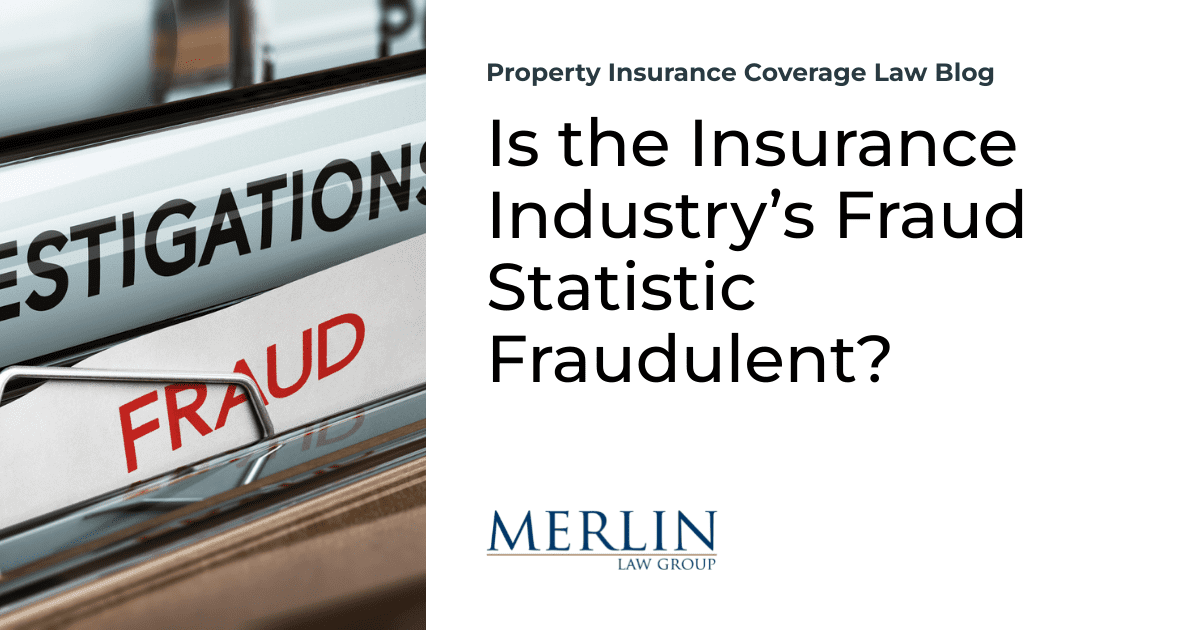Is the Insurance Industry’s Fraud Statistic Fraudulent?

This is not the first time I have raised this issue. Fourteen years ago, I posted Are Insurance Fraud Statistics Fraudulent? Those making up these statistics are still not transparent with the actual numbers and methodology. They do not show how the calculations were made.
At least this study admits that the numbers are not reliable and that they are not based on actual findings of fraud from insurers:
The WCCTF considered multiple methodological approaches as the foundation of this study. Consideration was made to conduct the research using a quantitative methodology, which would involve developing a research instrument in the form of a survey, which would then be circulated in the insurance industry. The benefit of this methodology would be real-time results directly from the industry. The WCCTF explored this option but discovered that this approach would be problematic due to data privacy concerns. Due to privacy issues with the release of claims, policy, and fraud information, gathering specific data from carriers and industry groups via a survey would be incredibly challenging, and yield sub-par data sets. After contacting several carriers which had data set sources, it was clearly understood by the WCCTF that the carriers were very resistant to releasing any data outside of their respective corporate environments, thus making this quantitative methodology, not a viable research option.
A qualitative methodology was also considered, whereby the researchers would perform in-depth interviews with industry professionals on fraud cost and measurement. This would be a very beneficial approach as direct contact and feedback would be gathered. However, the WCCTF realized that this approach would also result in the same data and information privacy challenges and therefore would not be an ideal structure for this research endeavor.
The WCCTF pondered many other research approaches and considered those options along with the timeframe and resources for this study and thought using available data sets would be the best option. The WCCTF conducted initial exploratory searches for several months for available data and existing research on insurance fraud and realized that there are many data sets, studies, and publications that have already been performed that can be utilized as the core data points for this current study. Therefore, the WCCTF decided that the structure of this study will consist of locating, reviewing, and analyzing currently available research and data sources, in other words, the WCCTF will not be collecting any ‘new’ data as part of this study.
In each of the Line of Business (LOB) sections, the WCCTF will address the reasoning behind the choice to utilize specific data as connected to that line of business. The WCCTF considered and reviewed hundreds of sources to serve this study, but the final data was chosen based on those sources that were aligned with organizations that had the highest degree of creditability in the industry and used the most accurate and effective method of data collection.
The researchers admit that they do not have data, and a lot of this was extrapolation. Yet, they make this statement:
[E]ven with these shortcomings and limitations, the research team is confident that the results will be credible, sound, and provide an accurate picture of the current cost of fraud in the United States.
Do any of you play the card game “bullshit?”
I made this comment fourteen years ago and think it still is applicable today:
The bottom line is that an insurance customer is every bit as good a customer after a loss as when the insurance company was pleading for the premium. Policyholders do not deserve Gestapo claims organizations treating them as guilty or unworthy of respect following a loss. While insurance fraud is a problem and should be punished, the insurance industry owes its customers and society in general an apology for providing unsupported statistics which cast dispersions on honest customers. If the industry truly believes the fraud numbers they cite are accurate, it should prove them.
Thought For The Day
Statistics are used much like a drunk uses a lamppost: for support, not illumination.
—Vin Scully







